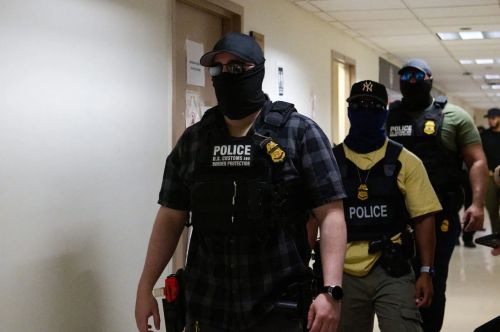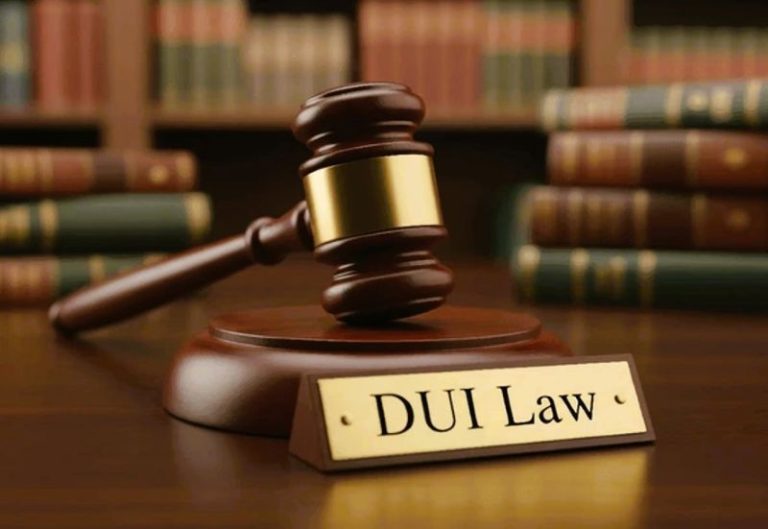

Since taking office, the Trump administration has undermined public safety and law enforcement accountability by supporting the dangerous practice of obscuring the identity of federal officers.

By Allie Preston, J.D.
Senior Policy Analyst, Criminal Justice Reform
The Center for American Justice
Introduction
In recent months, federal U.S. Immigration and Customs Enforcement (ICE) and other federal law enforcement officers—roaming the streets in plainclothes, masked, and sometimes armed—have stoked fear in communities nationwide. These federal agents have been seen swinging batons, smashing car windows, using explosives to blow the door off of a home with children inside, emerging from unmarked vehicles with weapons drawn, shooting into a family vehicle, and grabbing people off of the street and putting them into unmarked vehicles. In cities such as Los Angeles, Minneapolis, Phoenix, and Miami, officers donning face coverings without an agency designation and driving unmarked vehicles have conducted immigration enforcement actions at schools, courthouses, religious institutions, and work sites. Meanwhile, in Washington, D.C., hundreds of officers from nearly 20 federal agencies, D.C. National Guard troops, and National Guard troops from six other states have been deployed to the streets, with masked U.S. Department of Homeland Security (DHS) agents manning checkpoints for drivers. This is the new, frightening image of U.S. immigration enforcement under President Donald Trump: violence, covered faces, and unknown agency affiliations. These images signal a troubling move “away from democratic controls,” where officers are visible and accountable to the communities they serve, and toward militarization that serves to instill fear and stifle dissent.
Enforcement actions by masked or unidentifiable officers, which have even included the arrests of elected officials and other U.S. citizens, are part of a broader effort to keep up with arbitrary and cruel immigration arrest quotas set by the Trump administration. As a result, today, ICE is operating in ways akin to the actions of secret police forces, tasked with carrying out Trump’s political agenda. These practices have stoked fear in communities across the country and raised serious questions about the safety and legitimacy of their operations under the Trump administration.
Amid public outcry, attorneys general, members of Congress, and former military and law enforcement officers have joined in to amplify concerns about the rise of these dangerous practices. Recently, attorneys general from 21 different states called on Congress to pass legislation that both prohibits federal agents from wearing face coverings to conceal identity and implements requirements for showing identification and agency designation. In addition to potentially violating federal law, officers operating without providing their agency or personal identifiers make everyone less safe—from law enforcement to civilians to entire communities. The presence of unidentifiable officers makes policing more challenging and dangerous, as community members or fellow officers may mistake them for a lawbreaker. Moreover, this practice spurs dangerous impersonations, impedes accountability for officers who are engaged in misconduct, and undermines trust in law enforcement.
Actions must be taken by legislators and other policymakers at the federal and state levels to curtail these dangerous practices and ensure that all law enforcement officers are properly identifiable as they go about their jobs, unless there is a legitimate reason not to be.
ICE Officers Are Using Multiple Tactics to Obscure Their Identity from the Public
Since President Trump took office, ICE officers have been seen making immigration arrests wearing plainclothes and without a personal identifier and have refused to identify themselves upon request from community members. While there is no standard uniform for ICE agents, recent months have seen an increase in ICE and federal law enforcement officers assisting in immigration enforcement using tactics to obscure their faces and designation. ICE and other accompanying federal law enforcement have begun regularly wearing ski masks, balaclavas, and gaiters as a way to prevent themselves from being identified and, by extension, limit transparency and accountability. In Arizona, for example, officers allegedly posed as utility workers to gain access to someone’s home. In many of these and other instances, officers’ tactics during arrests, including the use of force, have instilled fear among immigrant and nonimmigrant communities alike, while also raising serious public concerns more broadly.
It is true that there are times when it may be appropriate, even necessary, for law enforcement officers to wear plainclothes, don a face covering, or hide their identity. For example, there are instances when someone may be working undercover, protecting themself from illness or an environmental condition such as a fire or chemical spill, or working on a case related to an organized crime entity where there is a credible threat of retaliation. However, these concerns typically do not arise in the types of immigration enforcement actions that many ICE officers are now engaged in, which often involve apprehending parents, college students, and community members with no criminal convictions or connections to criminal organizations. In fact, the practice of masking and hiding identifiers can jeopardize the safety of ICE and other federal law enforcement officers by making it harder for other officers or community members to identify them as law enforcement and interact with them accordingly.
Some claim that masks are used by officers to protect against doxxing, a practice whereby people’s personal information is shared, often online, as a precursor to harassment. While any real threats to officer safety should be taken seriously, there are thankfully already mechanisms at the federal and state levels aimed at protecting officers from these harmful acts.
Every day, law enforcement officers across the country get dressed in their uniforms to fulfil their duties and serve their communities. This includes state and local law enforcement officers, who are participating in work that may have greater risks than immigration enforcement. Federal law enforcement should be held to the same standard of good policing as local officers to ensure that policing is safe, transparent, and accountable.
Legal Requirements Related to the Identity of ICE and Other Federal Law Enforcement
Depending on the circumstances of the arrest, federal law enforcement officers may be in violation of federal law if they fail to properly identify themselves. According to Title 8 § 287.8, “only designated immigration officers are authorized to make an arrest,” and they are required to identify themselves as an immigration officer as soon as it is “practical and safe.” Recent reporting has noted that officers making arrests have failed to identify themselves or their agency in instances when it was “practical and safe” even when asked directly, potentially violating this provision.
Additionally, in an unusual move, the Trump administration deployed ICE agents and other federal law enforcement officers in response to protests in cities such as Los Angeles and to arrest protestors in cities such as Omaha, Nebraska. Under 10 USC 723, federal agents responding to “civil disturbances” must, likewise, “visibly display” IDs and agency affiliation, unless exempted. With the recent federal enforcement activities at protests, it is possible that officers who concealed their identity or agency may have violated this provision.
Safety Concerns Raised by Masked and Undesignated Law Enforcement
Overview
In addition to potentially violating the legal requirements stated above, federal law enforcement officers who carry out their jobs with their faces covered or without properly identifying themselves can create serious safety concerns for law enforcement and community members alike.
Unidentified Officers Face Significant Risk of Friendly Fire and Other Violent Escalations, while also Hindering Accountability and Eroding Community Trust
Law enforcement uniforms were created, in part, to keep officers safe. Uniforms are a visual representation of officers’ authority and help to influence the ways in which others interact with them. Unidentified officers conducting enforcement actions in plainclothes can increase the chances of tragic “blue-on-blue,” friendly fire incidents, where one officer accidentally shoots another. Since federal agents typically do not notify local law enforcement when federal officers are operating in their community, the risk to officers is exacerbated.
A lack of proper identification can also lead to unnecessary escalations in the community. Without seeing an officer’s agency designation or identification, people may refuse directives, since they, reasonably, may not believe that a group of strangers in masks and plainclothes are actually the officers they claim to be. Neighbors, loved ones, or other bystanders who witness an enforcement action may believe that someone is being harmed, causing them to intervene or call the police. The inability to determine whether individuals grabbing people off of the street and throwing them into unmarked cars are legitimate officers or lawbreakers has already led many community members to call on state and local enforcement for help during events that they believe to be kidnappings. Masking instills fear in communities, undermines trust between residents and law enforcement and hinders accountability. It limits the cooperation between law enforcement and communities that officers rely on to do their jobs. These types of intimidation tactics are also a common tool of authoritarians who seek to stifle dissenting voices and quell opposition to their agenda.
Widespread Masking and Obscuring of Officer Agency and Identity Encourages Dangerous Impersonations
Law enforcement uniforms were created, in part, to keep officers safe. Uniforms are a visual representation of officers’ authority and help to influence the ways in which others interact with them. Unidentified officers conducting enforcement actions in plainclothes can increase the chances of tragic “blue-on-blue,” friendly fire incidents, where one officer accidentally shoots another. Since federal agents typically do not notify local law enforcement when federal officers are operating in their community, the risk to officers is exacerbated.
A lack of proper identification can also lead to unnecessary escalations in the community. Without seeing an officer’s agency designation or identification, people may refuse directives, since they, reasonably, may not believe that a group of strangers in masks and plainclothes are actually the officers they claim to be. Neighbors, loved ones, or other bystanders who witness an enforcement action may believe that someone is being harmed, causing them to intervene or call the police. The inability to determine whether individuals grabbing people off of the street and throwing them into unmarked cars are legitimate officers or lawbreakers has already led many community members to call on state and local enforcement for help during events that they believe to be kidnappings. Masking instills fear in communities, undermines trust between residents and law enforcement and hinders accountability. It limits the cooperation between law enforcement and communities that officers rely on to do their jobs. These types of intimidation tactics are also a common tool of authoritarians who seek to stifle dissenting voices and quell opposition to their agenda.
Deploying Unidentified Officers Impedes Accountability
Community members must be aware of an officer’s identity and agency affiliation in order to know their rights and understand the authority that the officer has to engage with them. Different law enforcement officers have different levels of authority to make arrests and enter certain spaces. Knowing the agency is also important for families and friends who are working to find their loved ones after an arrest.
This is a serious concern now that the Trump administration has ordered agents from other federal agencies not usually engaged in immigration—including from the FBI, the U.S. Marshals Service, the U.S. Drug Enforcement Agency, and the Bureau of Alcohol, Tobacco, and Firearms—to participate in enforcement activities. Without knowledge of the agency or individual officers who are engaging in enforcement in their communities, there is no way for people to report or hold officers accountable for unprofessional behavior or misconduct, even in instances that may involve violence or illegal activity.
Key Components of Legislation to Curb Widespread Masking and Require Identification of ICE and Other Federal Officers
Overview
Accountability and oversight are needed to protect communities from the wave of masked, unidentifiable federal law enforcement officers who are violently arresting residents across the country—as well as from the opportunistic impersonators who have taken advantage of this new trend to commit violence and other crimes. Congress should heed the calls of 21 attorneys general to pass legislation that both prohibits the wearing of face coverings to conceal officers’ identities and implements requirements for visible personal identification and agency designation. As Congress and state legislatures work to curtail these harmful practices, they should consider key components of proposed laws or existing legislation.
Restricting the Use of Nonmedical Masks and Facial Coverings
Legislators should seek to create clear guidelines to limit the use of masks and other face coverings to clearly defined circumstances. While the circumstances are limited, proposals to prohibit law enforcement from wearing face coverings should include narrow exceptions that allow officers to wear masks to protect the integrity of an undercover operation, prevent the spread of illness, or guard against environment hazards.
Requiring Officers to Clearly Display Agency Designation and Identification
Requiring officers to have visible identification that includes both an agency designation and a name or badge number as a personal identifier helps to protect against impersonations, allows residents to assess their rights and responsibilities when engaging with officers, and ensures that residents have the information they need to report misconduct and seek accountability.
- Legislators have included these requirements in multiple federal bills, as well as bills in California and New York.
- DHS should implement a standard uniform for ICE Enforcement Removal Operations officers, who are primarily responsible for immigration enforcement operations.
Implementing a Duty to Intervene or Mandatory Reporting Related to Mask Use and Identification
Like the existing duty to intervene and report excessive use of force, legislation should create a duty to intervene and reporting requirements when officers are using prohibited face coverings or failing to identify. Legislation should include requirements for training on this duty to ensure that it is properly followed.
- In New York, the Mandating End of Lawless Tactics (MELT) Act would create a state requirement for ICE to report mask use, among other things.
- In the absence of a federal requirement, states could pass laws creating a duty for their officers to intervene when interacting with federal law enforcement.
Creating Accountability and Enforcement Mechanisms
To ensure that new policies are enforced and that officers are held accountable, legislators can create requirements that agencies have written policies related to masking and identification. In the event that these policies are violated, procedures should be established for accountability.
- The No Vigilantes Act in California requires agencies to have written policies related to masking and identification, with any violation of its provisions amounting to a misdemeanor.
- The federally proposed VISIBLE Act requires DHS to create disciplinary procedures for violations of its identification provisions, investigate complaints, and report violations to Congress.
Ensuring That Laws Related to Identification Apply to All Necessary Contexts
Some legislation related to masking and identification only applies in certain circumstances. Legislators should ensure that the scope of these requirements is broad enough to cover all the situations in which officers are being deployed.
- For example, Congress should expand the parameters of 10 USC 723, requiring officers to visibly display personal identifiers and agency affiliation. Currently, 10 USC 723 only applies to instances where federal agents are responding to a “civil disturbance.” The scope of this requirement should be expanded to include what is now a more common task across federal agencies: immigration enforcement.
- H.R. 3172 creates requirements for CBP and ICE agents and other officers deputized by DHS to have “bold and visible identification.”
Conclusion
The rise of masked and unidentifiable federal law enforcement conducting immigration enforcement is dangerous for officers and communities alike. This trend instills fear and breaks down trust between law enforcement and the community. These tactics also reduce the government’s accountability to the public and serve to instill fear and stifle dissenting voices from speaking out in opposition.
Across the country, state and local law enforcement officers respond to calls, including those related to crime and violence, in communities every day. Most of these officers are unmasked and in uniform and display information related to their agency affiliation and personal identity. Federal agents engaged in immigration enforcement should be held to the same standards. Action at the federal, state, and local levels is both urgent and necessary to ensure that federal law enforcement is identifiable and accountable to communities.
Originally published by The Center for American Progress, 08.28.2025, republished with permission educational, for non-commercial purposes.


